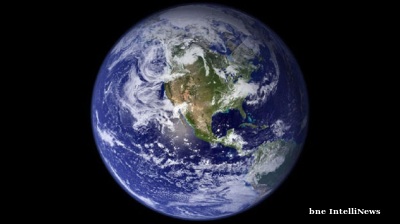The International Monetary Fund (IMF) has lowered its forecast for Russia’s economic growth in 2025 to just 0.6%, marking the second-steepest downgrade among major economies, even as it raised its global outlook, the organisation reported on October 14.
At the same time, the IMF left its growth projections for Ukraine unchanged, despite escalating Russian attacks on energy infrastructure and a widening budget shortfall.
The revised Russian projection represents a 0.3 percentage-point cut from the IMF’s July estimate of 0.9%, and a significant drop from the 1.5% growth forecast published in April. The downgrade follows a period of stronger-than-expected growth in 2024, when Russia’s economy expanded by 4.3%, fuelled largely by elevated wartime spending.
Despite the downward revision, the IMF maintained its longer-term forecasts for Russia, projecting GDP growth of 1% in 2026 and 1.1% by 2030. These figures suggest a prolonged period of subdued expansion, in stark contrast to official Russian estimates.
Russia’s Economic Development Ministry has projected GDP growth of 1% in 2025 and 1.3% in 2026, anticipating a gradual acceleration to between 2.5% and 2.8% later in the decade. Meanwhile, the Central Bank of Russia forecasts economic growth of 1–2% in 2025 and as much as 2.5% by 2028.
Alongside the growth downgrade, the IMF also warned of rising inflationary pressures. It now expects Russia’s inflation rate to reach 9% in 2025 — more than double the global average forecast of 4.2% — before moderating to 5.2% in 2026. Inflation in Russia stood at 8.2% as of early September, according to the Central Bank.
Globally, the IMF raised its 2025 growth forecast to 3.2%, up from 3% in its July update. The 2026 global outlook remains unchanged at 3.1%.
The IMF’s latest World Economic Outlook highlights a widening gap between Russia’s near-term prospects and those of the broader global economy, as structural constraints and high inflation weigh on the country’s post-war recovery.
Ukraine growth flat in 2025
The IMF forecast Ukraine’s GDP growth of 2% in 2025 and 4.5% in 2026, unchanged from its April 2025 projections. The figures signal a pause in downward revisions, though they remain lower than the Fund’s October 2024 forecasts of 2.5% and 5.3%, respectively.
Ukraine is currently negotiating a new four-year loan programme with the IMF and seeking additional international support to fill an estimated $65bn budget gap for the 2026–2029 period. The country continues to rely almost entirely on external financing for non-defence spending, with domestic revenues directed primarily toward the war effort, which accounts for roughly half of the national budget.
While Ukraine’s economy has shown signs of resilience — rebounding by 5.5% in 2023 and 2.9% in 2024 following a severe wartime contraction — output remains more than 20% below 2021 levels, according to data from the Kyiv-based Centre for Economic Strategy.
The contraction in 2022, when GDP fell 28.8%, reflected the initial shock of Russia’s full-scale invasion, which led to the occupation of around one-fifth of Ukrainian territory and triggered the displacement of nearly 6mn people.
The IMF’s unchanged forecasts come as Ukraine faces growing uncertainty over the pace and reliability of international funding. Russian strikes on critical infrastructure have intensified in recent months, raising further concerns over energy security and the continuity of industrial activity during the winter heating season.
Ukraine’s longer-term recovery remains dependent on sustained financial assistance and the stabilisation of security conditions, both of which are subject to increasing geopolitical risk.







